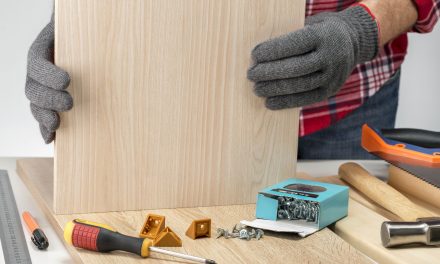Painting of tiles
Nowadays, we attach great importance to the appearance of our flats and the space they provide for our lives. We want to surround ourselves with beautiful things. We want our house to be not only functional, but also nice. I will not lie if I write that the biggest obstacle to dreaming of a beautiful apartment are…funds. Or rather, the lack of them. Few people can afford to change everything as soon as the arrangement, made a few years ago, simply gets bored. What’s more, a large part of us buys an apartment from the secondary market and gets a bathroom in quite good condition. Only these tiles…no hmmm…in”brown”-colour. (that’s how I will put it nicely), willingly or not, they are associated with the People’s Republic of Poland (and I mean aesthetics rather than their “age”). Then we are faced with a dilemma – whether to replace them or not? On the one hand, it is difficult for us to get rid of quite good tiles, all the more so as the purchase of an apartment alone will undermine our often limited budget. On the other hand, we would like to arrange ourselves as beautifully as possible, and these doubtful beauty tiles definitely spoil the whole effect. Is there a way out? Is it possible to change tiles at low cost? Certainly! They can be… painted! This topic has been circulating on the web for some time now. It is quite controversial, with both supporters and opponents. I was curious what such extreme opinions were about, so I decided to check it out. I got information from the source (that is people who have already painted the tiles behind me) and I gathered everything in one place: ?
Most of the information contained in the article I received thanks to the courtesy of several dozen of people who shared their opinions. At the very end of the article you will also find the statements of a few girls who painted the tiles at least a few months ago.
BACKGROUND INFORMATION
Paints for tile renovation are specialist preparations which, due to their properties, “stick” to smooth and rough surfaces. They usually have a satin finish (no matt, no gloss). They are designed for indoor use, rather in areas where there is no risk of scratching. You can paint tiles that are smooth, rough or decorated. If the protrusions are quite large, after painting they will still be visible (but of course only the shape, the color will not puncture). A big plus is that everyone can manage to paint their bathroom or kitchen. The location of new tiles very often involves the help of a specialist, and of course there are additional costs. In addition, their replacement is closely related to dirt and noise, which we sometimes cannot (or do not want to) afford.
Most often, paints from two companies are recommended. The first is Hydropox (from Noxan), which is quite expensive (about 105zł/kg), but has a wide range of colors. The second one is the paint of the company v33, more popular and cheaper (about 70 PLN/l). Unfortunately, the availability of colours is much more limited.
Note: Floor tile paint can be used on the wall, but not the other way round.
V33 renovation of floor tiles
V33 restoration of ceramic tiles
Paints are very efficient. Usually, 1 litre of paint will suffice to paint about 7-8m2 of the surface. It should be remembered that it is necessary to apply a minimum of 2-3 layers (when painting 3 layers, 1 liter is enough to renew about 2.5m2). But this depends primarily on the colour of the output tiles. If they are dark and you want to paint them in a light shade, you may need to apply more than 3 coats. Girls who have already painted the tiles are advised to wait about 24 hours before applying another coat. And after applying the last one, it is worth taking care not to damage the painted surface or clean it for about a week (it is worth to know that the complete cure takes place only after about 20 days from applying the last coat).
Note: To calculate the surface to be painted, multiply the width and height of each wall, and the width and length of the floor (if you also want to paint it). All faults and recesses must be taken into account. Remember that you will need to apply several layers.
THE NEXT STEPS IN THE WORK
First, degrease the surface you want to paint. Ideally, treat the tiles thoroughly with acetone, gasoline or degreaser to ensure that there is no deposit left on the tiles that could reduce the adhesion of the paint. Care must also be taken to ensure that the tiles do not contain any pollen, as this may be visible after painting. It is best to clean the joints with a brush, while silicone should be completely removed.
Then, the paint must be thoroughly mixed with a mixer to obtain a uniform consistency. The paint V33 has a bag glued under the lid, with an additional ingredient, which must be absolutely mixed with the paint (I do not know as in the case of other companies). The mixture prepared in this way should be used within a maximum of 10 days. After this time, it loses its properties.
To paint the tiles, the best solution is to use a flock roller, which first consists of p
is it worthwhile to do it like this











